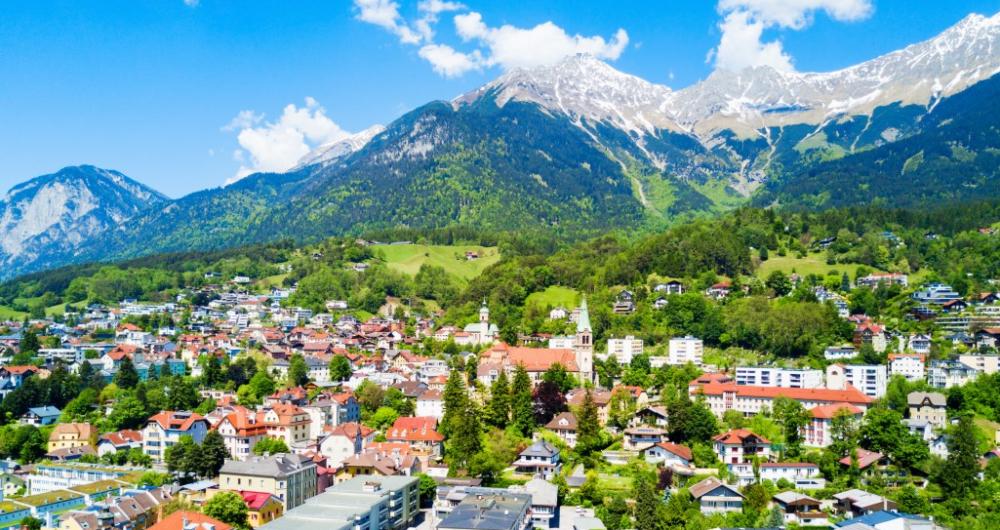In This Article
Want an alpine getaway with imperial charm and outdoor adventure? Head to Innsbruck, Austria! Surrounded by dramatic mountains, this Tyrolean gem offers world-class skiing, colorful Old Town streets, Habsburg palaces, and scenic cable car rides—all in one magical mountain setting.
When I like to visit
The best time to visit Innsbruck depends on your interests. For winter sports, visit from December to March. For hiking, biking, and festivals, the ideal time is May through September. Christmas markets in December add cozy seasonal charm.
Tips for getting There
- By Air: Innsbruck Airport (INN) has seasonal direct flights from European hubs and is just 15 minutes from the city center.
- By Train: Innsbruck is well connected by rail to Munich, Vienna, Zurich, and Venice.
- By Car: Located along the A12 and A13 motorways, Innsbruck is easily accessible by car from Germany, Italy, and Switzerland.
Where I like to stay
- Hotel Innsbruck – Upscale hotel on the edge of the Old Town with a rooftop spa and mountain views.
- NALA Individuellhotel – Stylish boutique stay known for artistic rooms and a central location.
- Stage 12 Hotel by Penz – Trendy, modern hotel just steps from the Golden Roof and Maria-Theresien-Straße.
Top Attractions
1. Step Into Imperial Majesty at Hofkirche and Walk Among Tyrolean Legends
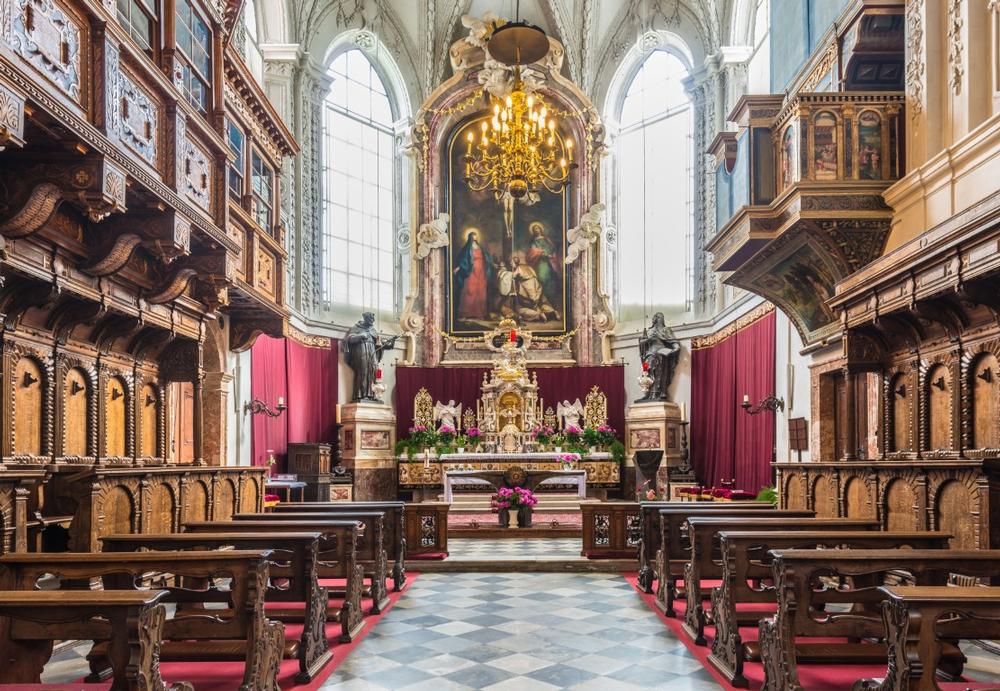
© Anibal Trejo/stock.adobe.com
The Hofkirche is a beautiful church that was built in the mid 16th century as a memorial to Emperor Maximilian I, by his grandson, Emperor Ferdinand I. The church, and Emperor Maximilian I’s tomb, is one of the most important (if not the most important) monuments in the Tyrol region of Austria, and is one of the most popular attractions in Innsbruck. The Hofkirche contains a pipe organ called the Ebert Organ which is almost five hundred years old, 28 massive bronze statues depicting Maximilian I, his ancestors, and legendary figures from Austrian history, and the Silver Chapel, which contains the sarcophagus of Phillippine Welser, the wife of Ferdinand II.
Universitätsstraße 2, 6020 Innsbruck, Austria, Phone: +43-5-12-59-48-95-14
2. Ride the Nordkettenbahnen and Climb from City Center to Sky-High Trails
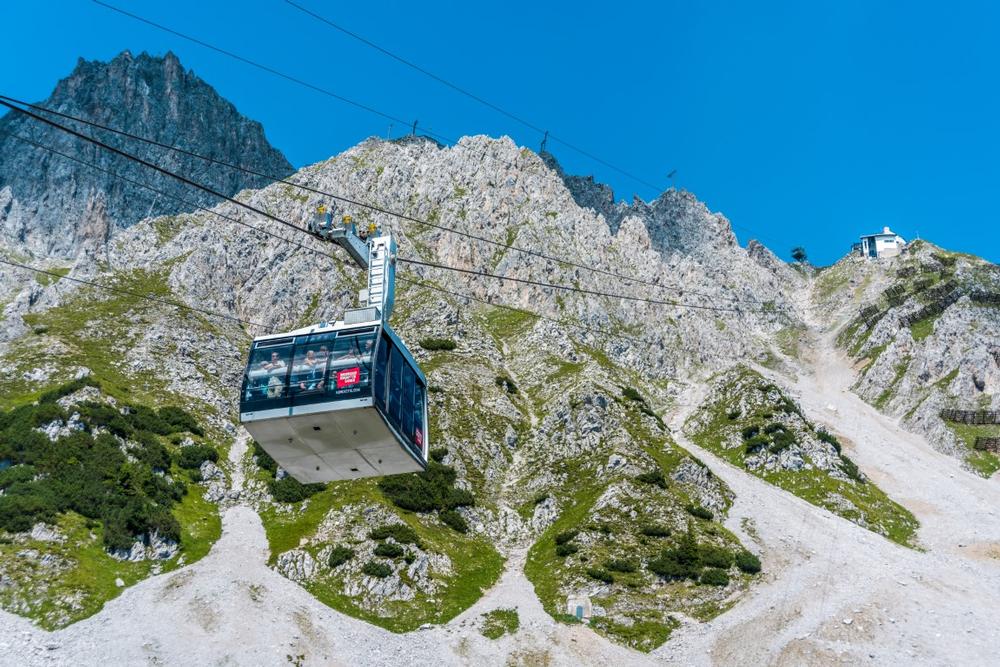
© Anibal Trejo/stock.adobe.com
One of the most iconic features of Innsbruck, by far, are the Alps, so when visiting the city, it’s almost imperative to get a great view. The Innsbrucker Nordkettenbahnen, otherwise known as the Nordkette Cable Car, is a gondola which runs from Seegrube Station in Innsbruck up to Hafelekelar at the top, which is part of Karwendel Nature Park and resides at nearly 7500 feet elevation. The ride to the top does not take long at all, but the 360 degree views offered from the gondola are absolutely breathtaking and the memories of it will last a lifetime.
Rennweg 3, 6020 Innsbruck, Austria, Phone: +43-5-12-29-33-44
3. Stroll Maria-Theresia Street and Soak Up Innsbruck's Stylish Soul
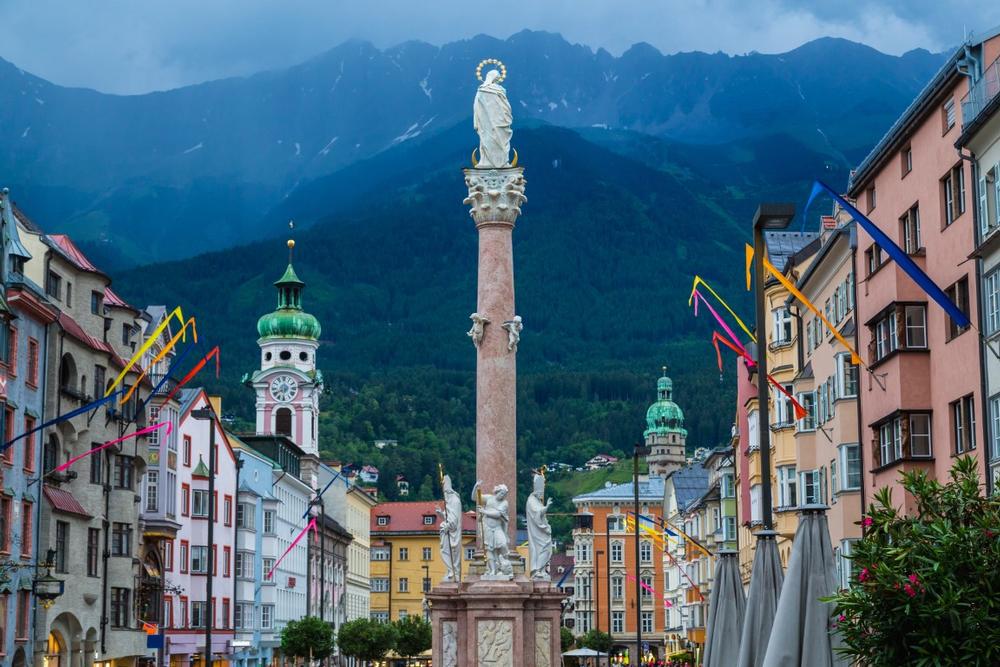
© mikecleggphoto/stock.adobe.com
In a city full of picturesque and Instagram-worthy locations, Maria-Theresia Street still places high on the list of scenic attractions. This beautiful street serves as the entryway into Innsbruck’s medieval Old Town district, and looking down the street will provide a view of historic buildings framed by steep mountains. The street is packed with shops and restaurants, and it is extremely popular with tourists looking for souvenirs or a delicious meal of knödel, wiener schnitzel, or kasspatzln, though visitors should be warned that prices along Maria-Theresia Street tend to be higher than elsewhere in the city.
Recommended Activities for Families
4. Glide Up the Hungerburg Funicular and Embrace Panoramic Innovation
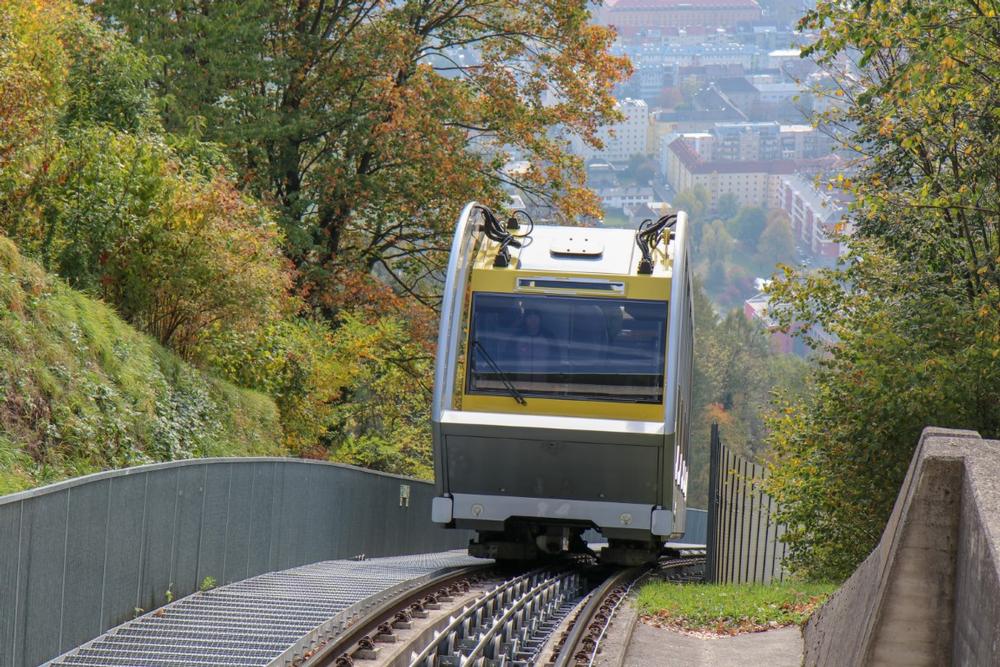
© suthon/stock.adobe.com
This funicular railway takes guests up the very steep slope of the Alps, from Innsbruck to Hungerberg. At the top, visitors will find an incredible view of Innsbruck, the Inn River, and the mountains that rise up to tower above the city. In Hungerberg, there is a viewing platform with binoculars that can be used to see far away details in the city and the Nordkette Mountain Range up close, and the small town of Hungerberg is a skiers paradise. Along the ride on the Funicular, there are several stops, and riders can get off at any of them to access the Alpine Zoo, some hiking trails, and more.
Hungerburg Funicular, Höhenstraße 151, 6020 Innsbruck, Austria, Phone: +43-5-12-29-33-44
5. Admire the Whimsical Charm of Baroque Beauty at Helblinghaus
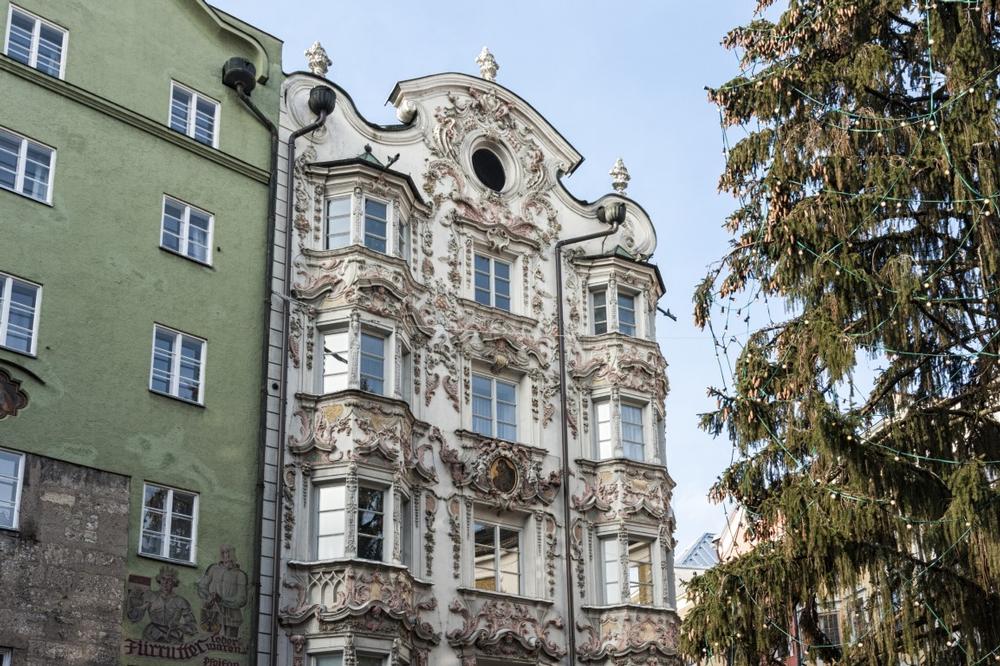
© LAURA/stock.adobe.com
Helblinghaus is a famous Baroque style building located in Innsbruck’s gorgeous Old Town. It is right across the street from the Golden Roof, and was originally built in the fifteenth century, though it has changed a lot with time. It’s elaborately designed and decorated exterior is a breathtaking example of master artistry and architecture, with Rococo-style decorations all bordering the windows and walls of the facade, which were added during the eighteenth century. Helblinghaus is an iconic part of Innsbruck, and its beautiful architecture is not to be missed.
Herzog-Friedrich-Straße 10, 6020 Innsbruck, Austria
Attractions for Couples
6. Stand Beneath the Goldenes Dachl and Feel the Pulse of Imperial Innsbruck

© Sergii Figurnyi/stock.adobe.com
This Innsbruck landmark is located in the Old Town Square, and the name “Goldenes Dachl,” which translates to “Golden Roof,” is a very apt name. Built in the year 1500 to celebrate the wedding of famous Emperor Maximilian I to Bianca Maria Sforza, the Golden Roof is built from over twenty five hundred gilded copper tiles, and has served for hundreds of years as a symbol of the wealth and power of the Hapsburg Empire. Today, the Goldenes Dachl is home to a museum, which is open December through October, and closed during the month of November.
Goldenes Dachl
, Herzog-Friedrich-Straße 15, 6020 Innsbruck, Austria
7. Feel the Adrenaline at Bergisel Ski Jump and Witness Engineering in Flight
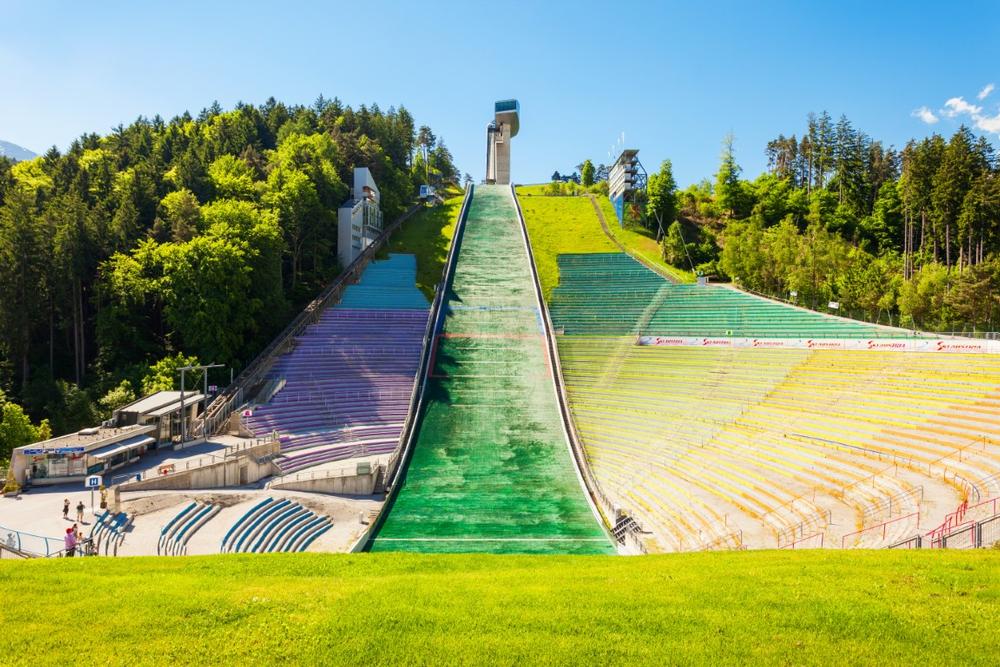
© saiko3p/stock.adobe.com
Every year, the annual FIS Ski Jumping World Cup, which is part of the Four Hills Tournament, takes place at the Bergisel Ski Jump, a massive jump that has room for twenty six thousand spectators. Bergisel Ski Jump was part of two separate Olympic Games, and has a flight of 455 steps to get to the top of the main tower. For those who aren’t up for the stairs, there’s also a funicular which can take them to the top of the tower, where there is a cafe and restaurant called Restaurant SKY, and an outdoor viewing platform which has amazing 360 degree views of the mountains and the city of Innsbruck.
Bergiselweg 3, 6020 Innsbruck, Austria
8. Explore Renaissance Elegance and Art Treasures at Schloss Ambras
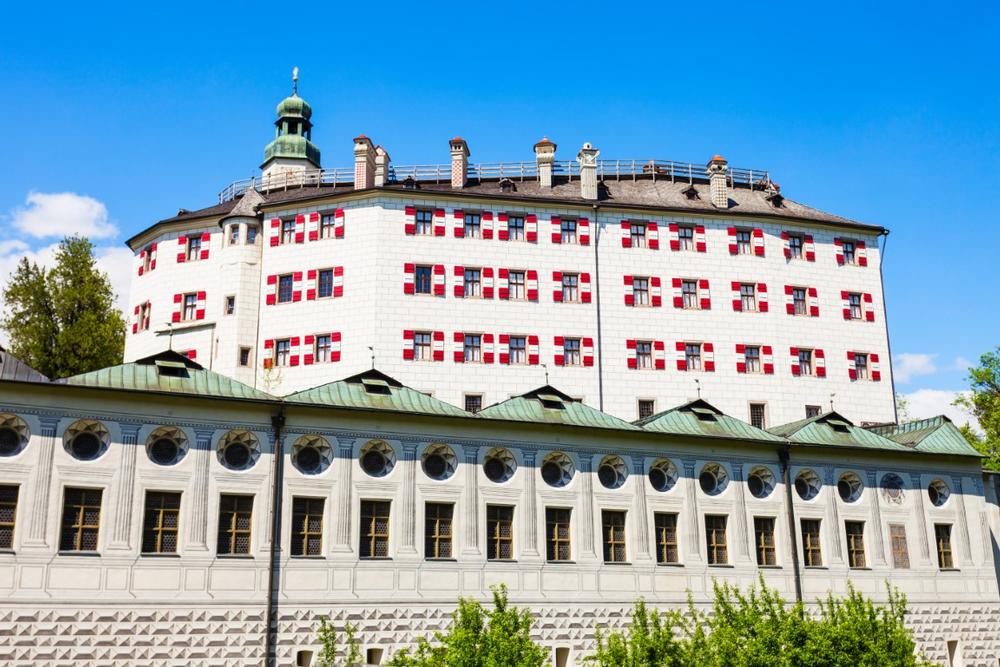
© saiko3p/stock.adobe.com
From December through October, Schloss Ambras, a beautiful Renaissance castle, is open to public visitors. This gorgeous landmark is nestled into the hills and mountainous slopes above Innsbruck. The original structure was built in 1133, and while nothing remains of the original building, what is there now in its place through renovation and reconstruction throughout the centuries is stunningly beautiful and bears amazing cultural and historical value, like the bathing chamber or the 14th century Chapel of St. Nicholas. Other features include the breathtaking Spanish Hall, which is a 16th century ballroom dominated by elaborate sunken windows on one side and massive portraits on the other, and the upper castle’s courtyard, which has some of the best-preserved existing examples of frescoes from the 16th century.
Schloßstraße 20, 6020 Innsbruck, Austria, Phone: +43-15-25-24-48-02
9. Listen to Bells Born of Fire and Craft at the Grassmayr Foundry
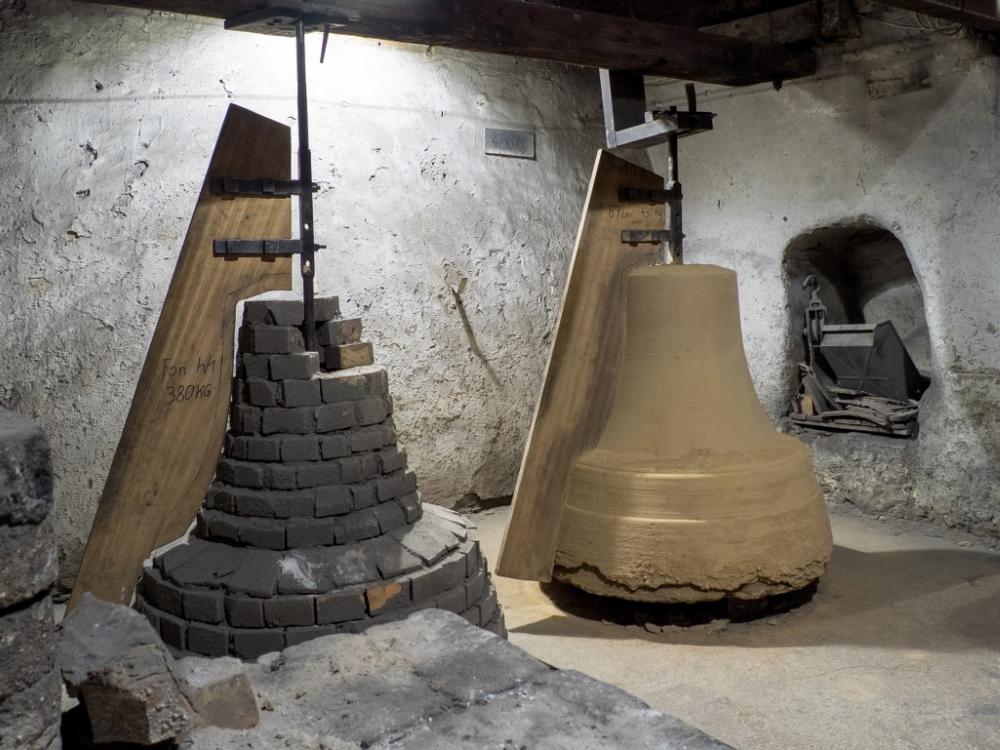
© OkFoto.it/stock.adobe.com
Since the year 1599, Glockengiesserei Grassmayr has been the forefront of the industry when it comes to making bells. This ancient bell foundry is the oldest family business in Austria, and the giant, beautiful bells made here can be found today in more than 100 countries across the globe. Visitors can check out the Glockengiesserei Grassmayr Museum for a look at how bells have been made throughout history, and is perfect for families or guests of all ages. The museum prides itself on being part foundry, part educational museum, and part sound studio, with plenty of bells for visitors to try out, and also has a shop.
Leopoldstraße 53, 6020 Innsbruck, Austria, Phone: +43-51-25-94-16-37
10. Uncover the City's Heartbeat Through Time at the Stadtmuseum

© Seventyfour/stock.adobe.com
History buffs visiting Innsbruck will not want to miss the Stadtmuseum, a major museum residing in a Gothic style building that was once an arsenal and stable. The Stadtmuseum has been teaching locals and visitors about innsbruck’s history since it was first founded in 1888, and provides some incredible insights into the way of life in historical Innsbruck. Through authentic artifacts ranging from paintings, photographs, documents, armor, clothing, musical instruments, tools, furniture, and much more, visitors will be able to learn about Innsbruck and the people who lived there all the way back to the 12th century.
Sankt-Jakobs-Platz 1, 80331 München, Germany, Phone: +49-89-23-32-23-70
Where I Like to Eat
- Die Wilderin – Farm-to-table dining with a creative Tyrolean twist and locally sourced ingredients.
- Stiftskeller – Traditional Austrian fare in a historic setting with hearty portions and local beer.
- Café Munding – Innsbruck’s oldest pastry shop, perfect for coffee and apple strudel in a classic setting.
Local Events
- Innsbruck Christmas Market (Late Nov–Dec) – Enjoy twinkling lights, mulled wine, and alpine crafts in the festive Old Town.
- Bergsilvester New Year’s Festival (Dec 31) – Ring in the New Year with fireworks, live music, and a mountain backdrop.
- Innsbruck Festival of Early Music (July–August) – Celebrate baroque and renaissance music with concerts in historic venues.
Day Trips Within 30 Minutes of Innsbruck, Austria
- Hall in Tirol (15 min) – Wander medieval streets, visit the Mint Museum, and admire alpine views.
- Seefeld in Tirol (25–30 min) – Enjoy mountain hikes, skiing, or relax in charming alpine village cafés.
- Axams (20 min) – Explore traditional Tyrolean charm and access ski slopes or summer trails at Axamer Lizum.
- Mutters (15–20 min) – Ride the Muttereralm cable car for panoramic hikes and family-friendly mountain fun.
- Rum (10–15 min) – Visit peaceful nature trails, local markets, and enjoy stunning views of the Nordkette Alps.
- Völs (10 min) – Shop local, dine in cozy inns, or explore quiet nature paths just west of Innsbruck.
- Natters (15 min) – Stroll along the lake, hike wooded trails, or take in views of the Wipptal valley.
- Lans (15 min) – Visit Lanser See for summer swimming or stroll the scenic Lanser Moor trails.
- Igls (15–20 min) – Ride the Patscherkofel cable car, hike alpine paths, or enjoy skiing in winter months.
- Telfs (30 min) – Discover local culture, shop markets, and explore the surrounding Mieming Plateau trails.
Plan Your Trip


